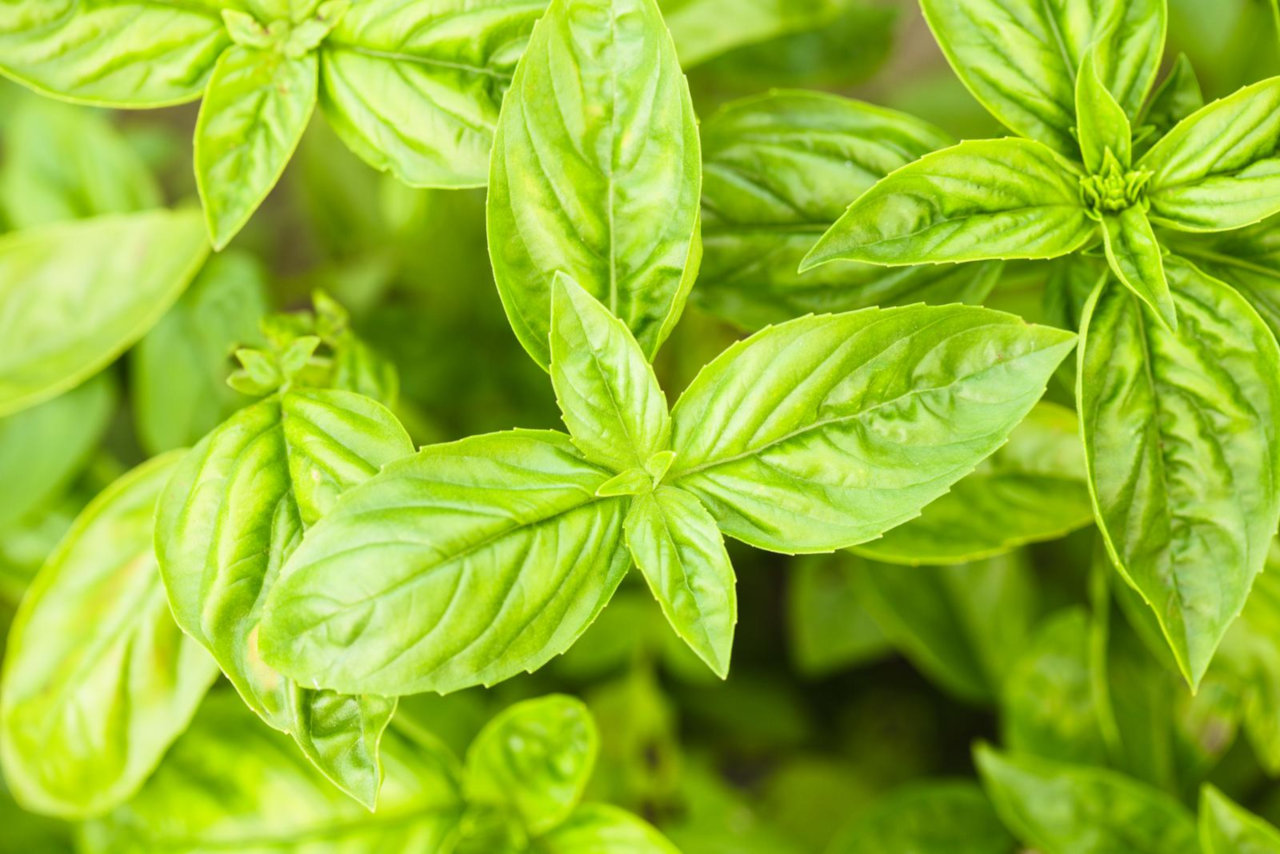Don’t rack your brains any longer about the right care for your basil. Here you will get all the important answers for the successful cultivation of basil in the garden and on the balcony.
How to Water Basil Properly
Balanced watering is one of the mainstays of basil care. The herb plant does not tolerate dryness, nor does it tolerate waterlogging.
It is advisable to check the moisture content daily with the thumb test and water the root area immediately when the substrate surface has dried out.
Ideally, you should even place the potted basil in water at a height of 2 inches (5 c) for a few minutes, so that the plant can water itself from below.
Should You Fertilize Basil?
In terms of nutrient requirements, basil belongs to the highly nutritious herbs.
This fact already affects the choice of soil in the bed and pot. Instead of lean herbal soil, basil requires a nutrient-rich, humus-rich substrate.
Fertilize your basil in the following intervals:
- In the bed from May to September fertilize every week with compost and horn shavings.
- Every 14 days, work 2 tsp of granulated cattle manure per sqft into the soil care
- Fertilize basil in the tub with organic liquid fertilizer
- In May and July, use guano fertilizer sticks with long-term effect.
Provided you plant basil in pre-fertilized soil, administer the first dose of fertilizer after 4-6 weeks.
Does Basil Need Pruning?
You should prune your basil for several reasons. First and foremost, to harvest the aromatic leaves. Second, to stimulate a lush branching. And last but not least, regular pruning stops flowering, which causes a bitter taste and heralds the end of the plant.
This is how to properly prune basil:
- From the earliest age, prune the plant to encourage bushy growth.
- For harvesting, always cut whole shoots with a length of 2-3 inches (5-7 cm).
- Cut back branches that form buds to the next leaf axil.
As long as at least one pair of eyes remains on the plant, the basil will resprout here.
Can You Overwinter Basil?
The heat-loving basil already stops growing at temperatures below 50 °F (10 °C). Frost is deadly for the tropical plant.
Nevertheless, a perennial culture is within the realm of possibility, as long as overwintering takes place in the protected ambience of the house.
First and foremost, the hardy African basil varieties are up to the challenge.
This is how to care for basil in winter:
- If temperatures fall below 54 °F (12 °C), relocate the basil indoors.
- A sunny, warm location at 59 to 68 °F (15 to 20 °C) is ideal.
- Keep the substrate constantly moist without causing waterlogging.
- Fertilize the basil organically every four to six weeks.
Although basil does not like to be watered from above, the very dry heating air can cause problems for the plant.
Therefore, place the pot in a saucer filled with pebbles and water. The evaporating moisture will surround the plant with a vitalizing mist.
What Diseases Threaten Basil and How to Treat Them?
Because basil is not native to this area, the plant is sensitive to neglect in care and is susceptible to various diseases.
The most common types of damage include brown or blotchy leaves. Check to see if you care for the basil properly. A cold, dark location or wet substrate often trigger brown spots.
It is possible that one of these two diseases causes problems.
Leaf Spot Disease
This fungal infection preferentially attacks weakened plants or is caused by seeds that are already infected. Remove all infested plant parts and dispose of them in household waste.
The only known control agents are chemical broad-spectrum fungicides, which are not recommended for use on food crops. Care for the infested plant carefully. Unless it recovers, it should be disposed of.
Lucerne Mosaic Virus
This widespread virus causes leaf lightening and vein yellowing that causes all foliage to die. Carriers are often aphids or weeds.
For effective control, tackle aphids and weed consistently from the day of planting.
What Pests Can Be Expected in Basil?
Basil is not spared from voracious slugs. In addition, the omnipresent aphids haunt the herb plant, immediately bringing the aforementioned lucerne mosaic virus.
Can You Fertilize Basil With Coffe Grounds?
Don’t throw away coffee grounds. Dried, it works miracles on basil.
Scattered around the plant from May to September, coffee grounds provide it with important nitrogen. At the same time, caffeine has a toxic effect on voracious slugs.

